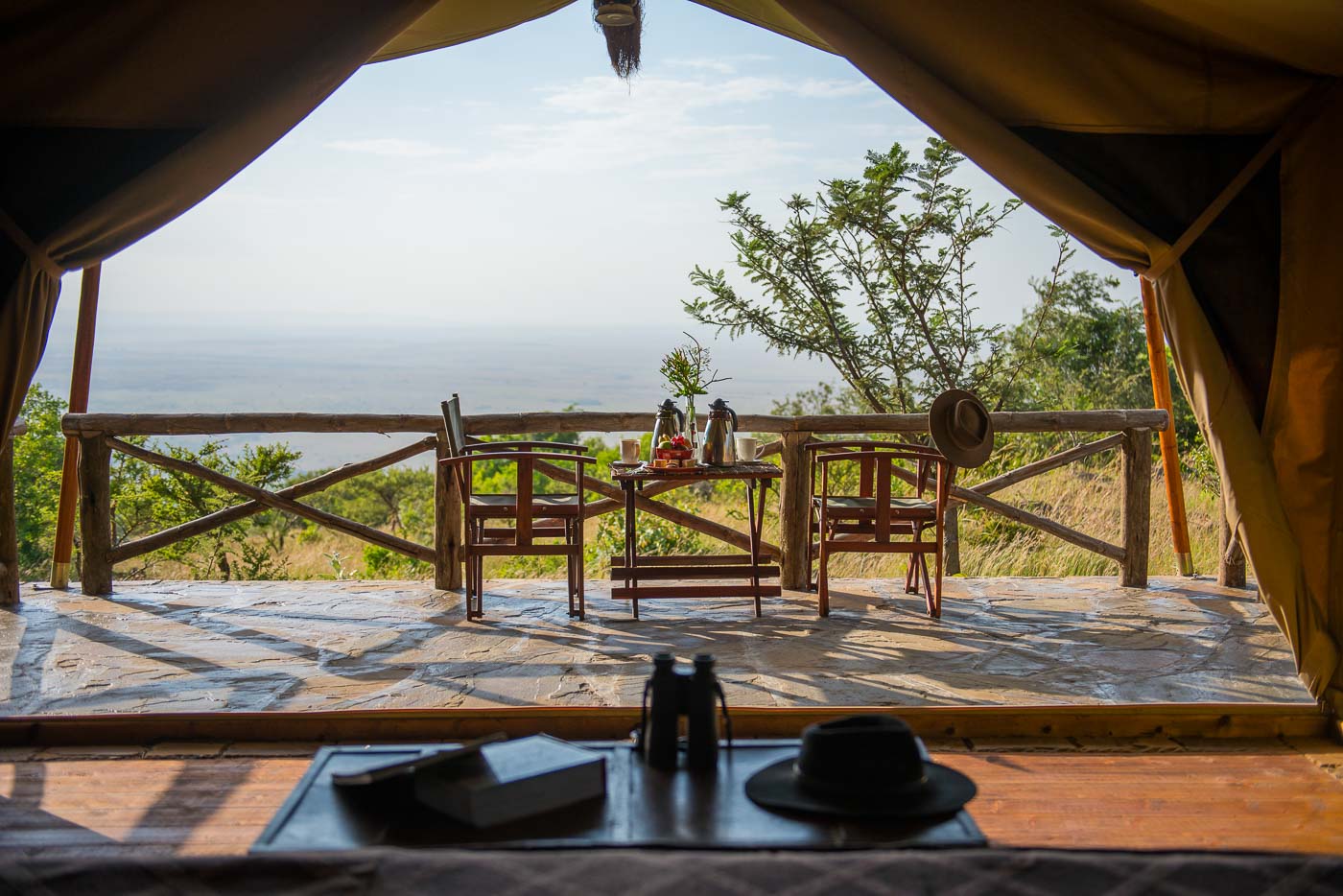Normally, when I think of “glamping,” I imagine camping… with with a touch of glamour. You know, a few modern day amenities like a real bed, electricity, and maybe an ensuite bathroom if I’m lucky. What I don’t typically imagine is a luxurious safari tent that could very well appear on the cover of an interior design magazine. This was my experience at Sandat Glamping — a boutique tent hotel on the island of Bali in Indonesia — which elevates the glam in glamping to a whole new level.
Sandat Glamping is located just outside Ubud, the artistic and cultural hub of Bali. Ubud is a popular destination among international travelers because of its hip vibe and stunning natural beauty. The town itself is rife with craft shops, dance performances, yoga studios, restorative spas, artisanal coffee, and organic chocolate. Immediately outside Ubud are lush green landscapes of rice paddies and bamboo forests. Given all these ingredients, it is no surprise that a luxury glamping destination would thrive here.
Meghan and I came to Ubud after spending a week in Bali’s busy coastal surf meccas, so we were excited for some well-deserved peace and quiet. Fortunately, Sandat Glamping is located outside the town center, about a 15 minute drive east of central Ubud, in the middle of working rice paddies.
As a boutique resort, there are only eight accommodations in the entire place — five luxury tents and three lumbungs. A lumbung is a traditional Indonesian “rice warehouse,” easily recognized by its bamboo pole structure and grass thatched roof.

While the two-story lumbungs would have offered a beautifully authentic Balinese experience, we opted to stay in one of the signature luxury tents instead. Each of Sandat Glamping’s five safari tents has its own, Indonesian-inspired name. We were staying in the Bantan tent, which we learned was also known as the “white tent.”

The concept of color theming would normally conjure mental images of a tacky hotel on the Las Vegas strip, but that association could not be farther from reality here. Sandat Glamping was developed by a fashionable Italian husband and wife duo with a tasteful eye for design. The color theme in this case is merely an accent, exquisitely woven throughout the unique decor of each luxury tent. Meghan in particular could not be happier that we chose the white tent with the shabby chic decor.

It was obvious that not a single detail of the interior design had been overlooked, and there were some thematic features that varied from tent to tent, from the hanging light fixture in the bathroom to the musical instrument used to summon room service. (Seriously. Our tent had a little xylophone, in lieu of the standard hotel telephone, if we needed something during our stay.)

The staff at Sandat Glamping are overwhelmingly accommodating and they would have gladly helped us participate in some of Ubud’s many tourist activities.

But we only had enough time in Ubud to stay at Sandat for one night, so opted to stay put and experience all the resort’s luxurious details. No need to leave! We’d rather rest and recuperate in our plush lounge chairs by our private plunge pool in the middle of our own slice of tropical jungle paradise.


We spent the rest of our day relaxing and reading in luxury. When we got hungry, we dined in Sandat Glamping’s main hall, which serves many functions including bar, lounge, restaurant, and meeting area. Just like the luxury tents, the hall is exquisitely designed, with attention to detail obvious throughout. Dinner was tasty too.


The next morning, we arose naturally with sunlight pouring into the tent, which is one of the many things we love about the glamping experience. This was the first time while glamping, however, that we found ourselves in a luxurious bed that’d rival any 5-star resort. Well-rested and feeling inspired, we went for a run along the paths carved out in the rice paddies and soaked up the beauty.

Our time at Sandat Glamping was now running short, but we still had time for breakfast. Like everything else, the meal was elevated by an unfailing attention to subtle details. I particularly loved the fresh assortment of Bali’s best bread, pastries, and jam. (I had gone running already, after all.)

After breakfast, it was time to go. Reflecting on our stay, it’s amazing how we never cease to be surprised by the range of our glamping experiences. We were initially drawn to the concept because we love nature, but find that camping can be cumbersome and a little too rough at times. Even then, glamping usually involves some sacrifices. Not at Sandat Glamping. On the contrary, Sandat has found a way to harmoniously merge the best elements of a boutique hotel — luxury, decor, and hospitality — with Ubud’s natural beauty, without making either feel out of place.
After a decade of running the rat race in institutional real estate investment, Dan decided to abandon the deferred life plan and pursue his dream of extended world travel while still young. He resigned from his career, sold all his possessions, and began an open-ended journey around the globe, along with his girlfriend Meghan. Dan now contributes to Glamping.com as a guest writer.




















